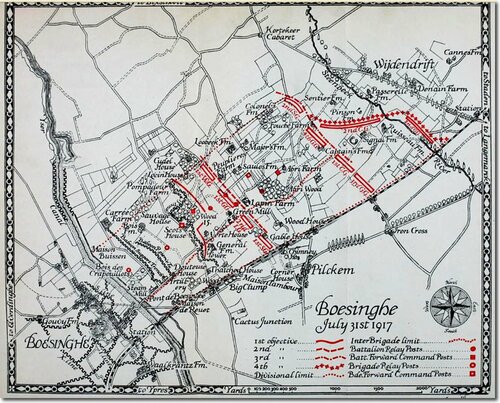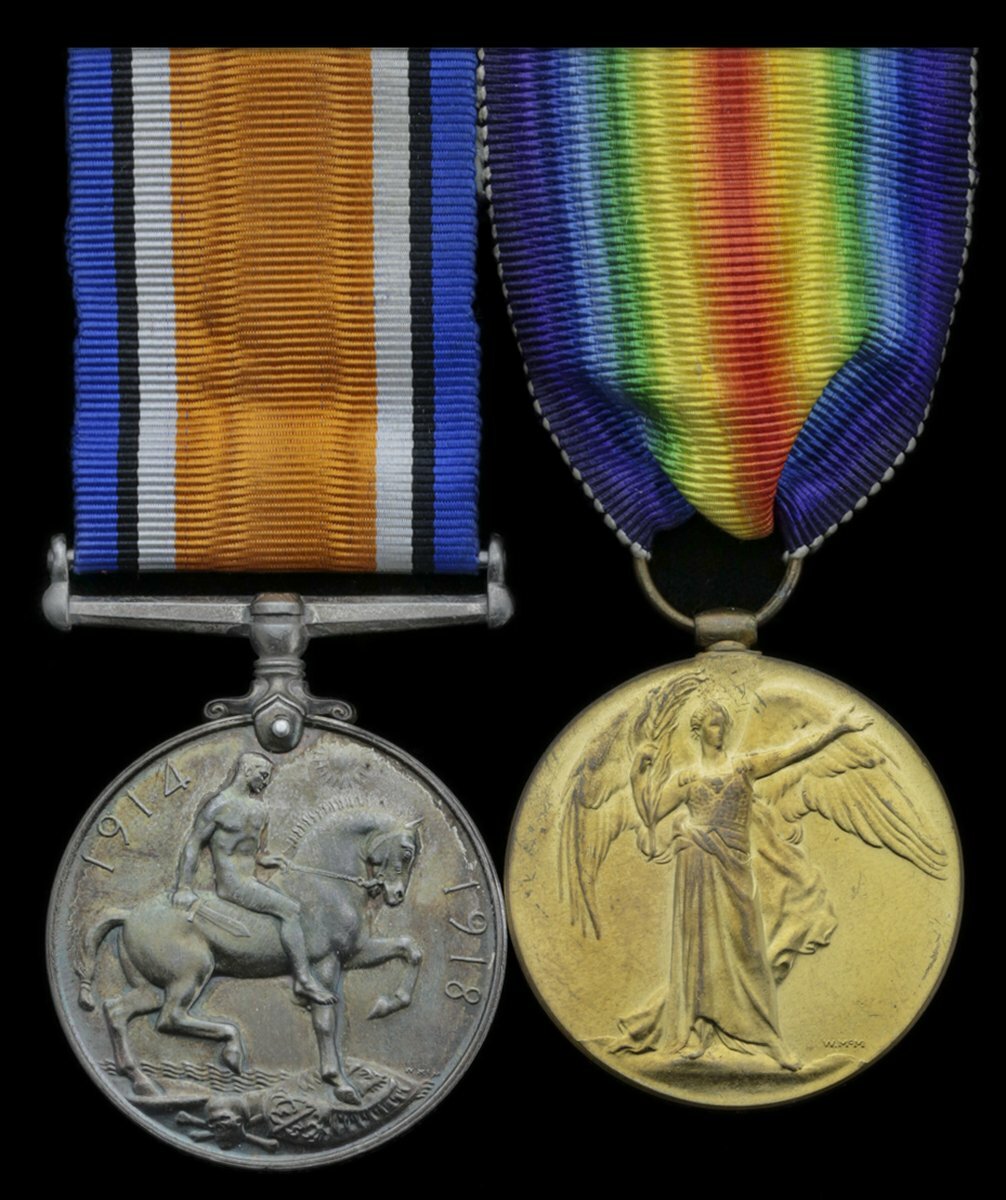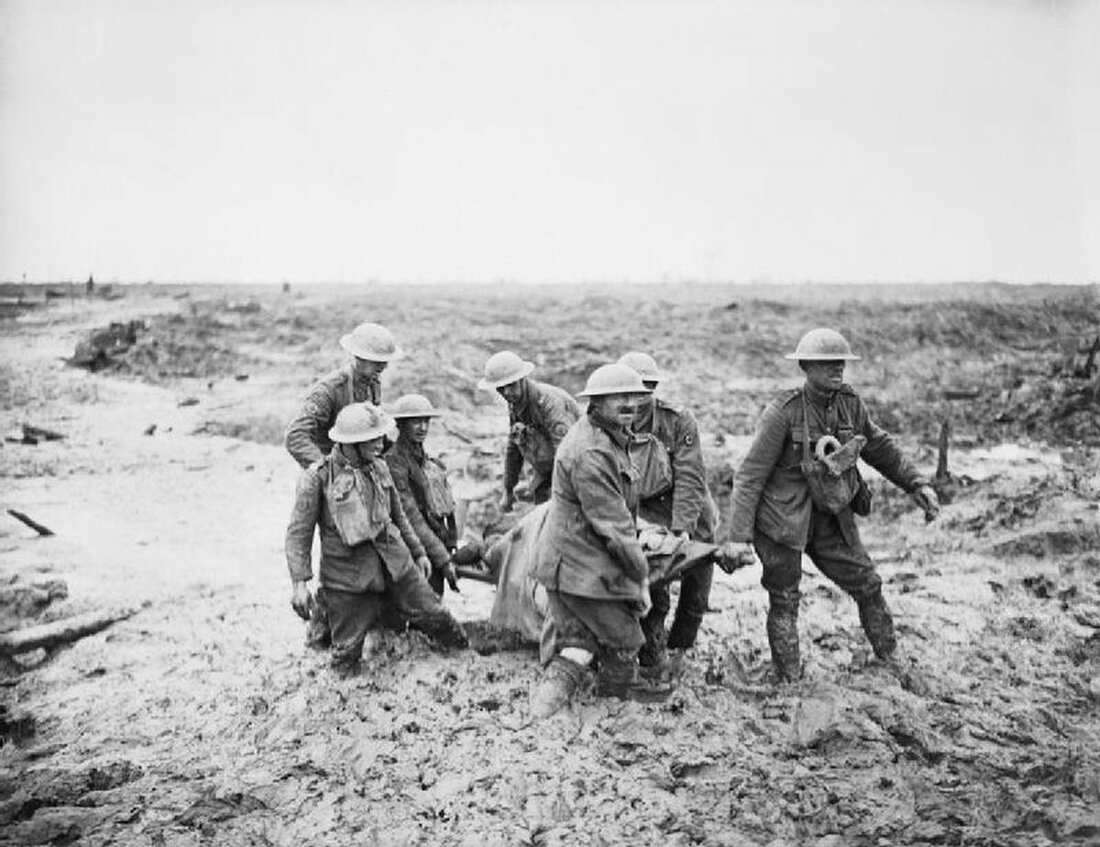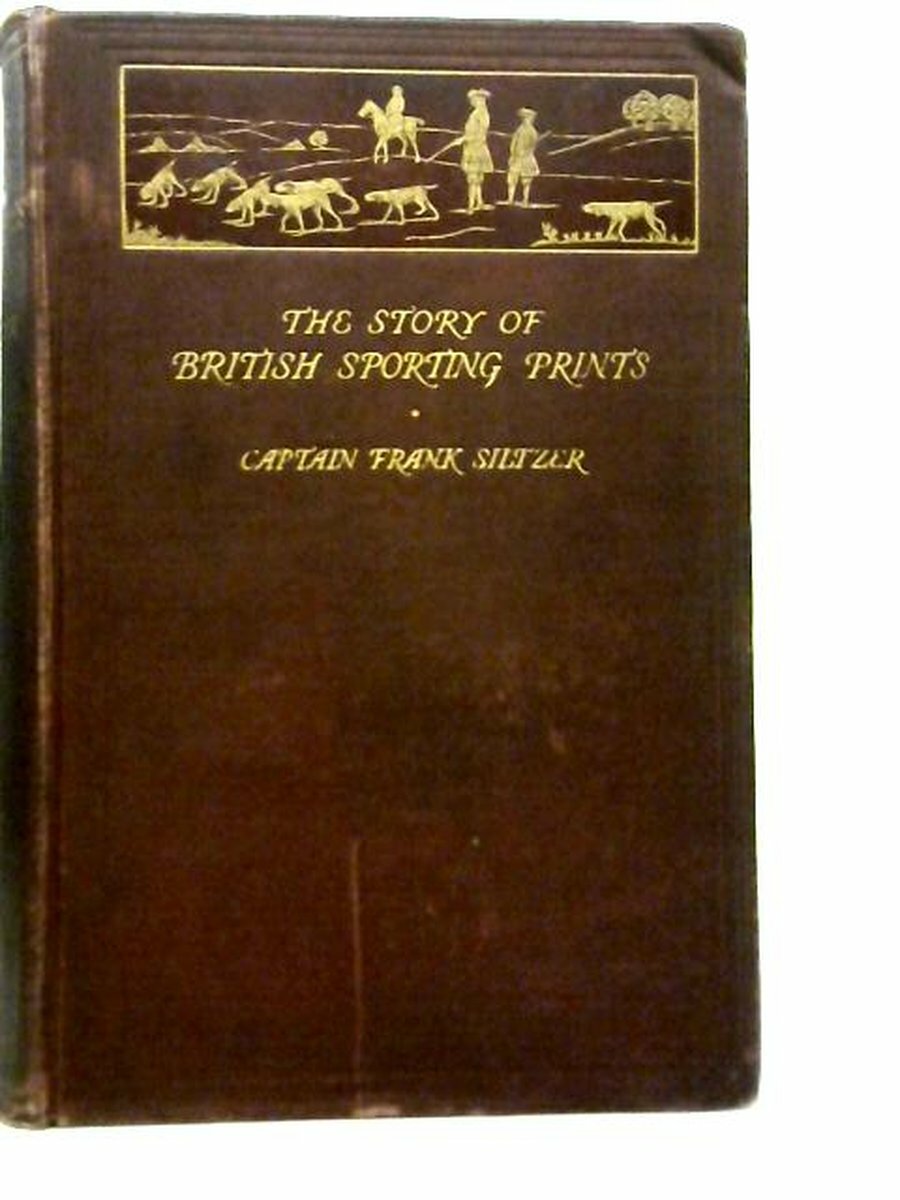Auction: 21003 - Orders, Decorations and Medals
Lot: 357
Pair: Captain F. J. Siltzer, Grenadier Guards, a noted author
British War and Victory Medals (Lieut. F. J. Siltzer.), mounted as worn by Spink & Son, 17-18 Piccadilly, good very fine (2)
Francis John David Siltzer - or Frank to his friends and comrades - was born on 13 August 1869 at Brussels, Belgium. Living at Kensington, London by 1881, he went up to be educated at Trinity College, Cambridge, gaining his BA in 1891. He married Violet Stourton in 1893. By the outbreak of the Great War, he was commissioned into the West Kent Yeomanry from the Middlesex (Duke of Cambridge's Hussars) Yeomanry on 21 September 1914. Commissioned into the Grenadier Guards, he served in France from 29 December 1916 and served with No. 1 Company, 3rd Battalion from April 1917 (The Grenadier Guards in the Great War 1914-18, refers). He was present during their famous attack at Beosinghe in the Battle of Pilckem Ridge on 31 July 1917, when the 3rd Battalion formed part of the 2nd Guards Brigade. The Regimental History continues:
'The whole Brigade took up its battle positions without any difficulty: the two leading Battalions each placed two companies less two platoons on the farther bank, and left two platoons as moppers-up on the western bank. The shelling of the Canal by the German artillery never ceased for a moment, and caused a good many casualties. The attack was timed to start at 3.50 A.M., but in order to conform with the creeping barrage the actual advance of the Brigade did not take place till twenty minutes later. The leading Battalions advanced behind the creeping barrage in four waves, with an interval of over 100 yards between each wave. The attack was assisted by a machine-gun barrage: eight guns from the Divisional Machine-Gun Company were detailed for this work, as well as the 4th Guards and the 29th Machine-Gun Companies. Both by the attacking troops, and by prisoners who were subsequently taken in the advance, this barrage was reported to have been most effective.
The attack was completely successful, and the first objective or Blue line was secured at 4.30 A.M., but there was naturally a considerable number of casualties, especially on the right, where the Scots Guards were exposed to enfilade fire. The 3rd Battalion Grenadier Guards waited in its trenches until 5 A.M., by which time it was light; and although the enemy continued with all the German thoroughness to shell the Canal itself, it never seems to have occurred to him to put barrages down farther back. This was undoubtedly a bad mistake on his part.
At 5 A.M., according to orders, the 3rd Battalion started off with No. 1 Company under Lieutenant E. R. Fryer on the right, and No. 2 Company under Captain the Hon. F. Eaton on the left. In support came No. 3 Company, commanded by Captain W. Neville, while No. 4 Company under Lieutenant F. Heasman was employed in carrying up material to the various objectives, and was directly under the orders of the Brigade. The passage across the Canal was successfully accomplished, though owing to the broken bridges there was a certain amount of delay. In some places, indeed, these bridges, consisting of petrol tins, had been so much damaged that there was practically nothing to walk upon. However, the barrage thrown on the Canal was by no means continuous, and as a certain amount of latitude was allowed in the choice of a crossing, officers were able to select comparatively safe courses, with the result that there were no casualties. Having crossed the Canal, the Battalion advanced in artillery formation towards Artillery Wood over the most difficult ground, while the German artillery sent high-explosive shells over, directing them to any strong points that might be made use of by the attacking force. So the 3rd Battalion arrived at the Blue line.
Meanwhile the battalions in front had been pushing on to the second objective or Black line. This phase of the attack was more complicated, for the enemy’s machine-guns were scattered about in “pill-boxes,” which were difficult to capture, and a great many casualties occurred not only from the machine-guns, but also from the German infantry, which was holding positions in the shell-holes in front of its trenches.
When the 3rd Battalion Grenadier Guards approached the Black line it found that there were hardly any British troops in front of it, as the Scots Guards, having suffered heavy casualties, were mostly employed in dealing with the “pill-boxes” on their right. Captain Eaton at once disengaged No. 2 Company, and brought it up on the left of No. 1. The enemy’s machine-guns at Maison Tambour had been very troublesome, and had caused twenty casualties in No. 1 Company on the way up. Leaving Captain Neville to deal with this difficulty, Captain Eaton and Lieutenant Fryer extended their companies in two waves, and with the help of the Scots Guards, who were now freed from guarding the right flank, rushed on, and seized the second objective or Black line. At the same time Captain Neville brought up Lewis guns and rifle grenades, and with the help of hand grenades succeeded in silencing the obstructive enemy post. The Adjutant, Lieutenant Henderson, finding that the Division on the right was not keeping pace, went out to find the Royal Welsh Fusiliers, but before he was able to accomplish his mission he was shot through the body, and eventually carried back into safety.
Although the Black line had been captured, the situation on the right was still unsatisfactory, and part of No. 1 Company had to face to that flank. The duty of reporting the position of the Battalion to the contact aeroplanes was then accomplished by waving large flappers above sheets laid on the ground.
The advance to the third objective or Green line was now timed to begin, and this was entrusted to the 3rd Battalion Grenadiers and 1st Battalion Coldstream. As the advance progressed considerable opposition was met with from the block-houses on the railway. These block-houses were also holding up the Thirty-eighth Division. Nor was No. 2 Company on the left of the Grenadiers free to advance, as there were several “pill-boxes” in front of it to be disposed of. Captain Eaton began to deal with these methodically, and with the aid of Lewis guns and bombs demolished each in turn. As No. 1 Company approached a house which it had surrounded, a large white flag was seen to be waved frantically from one of the apertures, and eventually three German officers and fifty men emerged and surrendered.
Captain Neville was occupied in dealing with the situation on the right, while Nos. 1 and 2 Companies continued their advance. Just beyond Wood House he brought up two machine-guns and got them into action under cover of the low railway embankment. Lieutenant Dunlop was told to advance with No. 9 Platoon, and started off most gallantly in the face of a withering fire when he was shot dead. Captain Neville at once brought up No. 12 Platoon, while Lieutenant Borthwick, with No. 11 Platoon, guarded the right flank. This enabled Nos. 1 and 2 Companies to push on and secure the Green line. During the last advance Captain Eaton had been unable to keep touch with the 1st Battalion Coldstream Guards, who had had to bear to the left to retain touch with the 3rd Guards Brigade, but on reaching the Green line every unit was at its allotted post. While Captain Eaton and Lieutenant Fryer were ordering their Companies to consolidate the position, Captain Neville noticed that the Thirty-eighth Division was still being held up by three “pill-boxes” which were situated in rear of his Company on the other side of the railway line. Rifle-fire was quite useless against 2 feet of ferro-concrete, and he therefore determined to make a bombing attack. Though there was, of course, considerable danger of the attackers being shot by the Thirty-eighth Division, it seemed the only way of dealing with this obstruction. The attack was led by Sergeant Browning and Private Baker, both of whom were wounded, and was wonderfully successful, the enemy being completely dislodged from their position, and losing 20 killed and 42 captured. Lieut.-Colonel Thorne came up soon after, and expressed his approval of all the dispositions that had been made. In order to adhere strictly to the orders, he told Captain Neville to take his men from the front line into support, and Lieut. Fryer to occupy the whole of the front-line trench. At this moment, however, the 2nd Battalion Grenadier Guards, of the 1st Brigade, was seen advancing to pass through, and in order to prevent any confusion Captain Neville decided to wait until it had passed before sorting out his men. Having carried out his orders he was just looking round to see if there were no more men of his Company in the front line when he was hit by a bullet.
During the whole attack No. 4 Company, under Lieutenant Heasman, acted as a carrying party for the whole Brigade, and was split up into five small parties of about twenty men, each under a Sergeant. Yukon packs which the men wore were of great service for carrying shells and water-bottles. Each man carried four Stokes-gun shells and a coil of French wire during the initial stages of the attack, but later in the day two or three tins of water were carried instead. One party made no less than five journeys to the Blue line, a distance of 1000 yards, and the average number of journeys was three. After the third objective had been taken Lieutenant Heasman received orders to go himself to Battalion Headquarters, and to send Second Lieutenant Carrington with the whole of No. 4 Company up to the second objective to relieve the Scots Guards.
The total casualties in the 3rd Battalion were 2 officers killed (Second Lieutenant B. J. Dunlop and Captain G. W. East, R.A.M.C.), 4 officers wounded (Lieutenant K. Henderson, Lieutenant J. F. Worsley, Second Lieutenant A. G. Elliott, 216and Captain W. Neville, M.C.), whilst among other ranks there were 26 killed, 113 wounded, and 12 missing.'
Siltzer was indeed lucky to come through, being promoted Captain. He applied for his Medals on 4 April 1922, with them being sent to him at 8 Chester Street, Belgrave Square.
A keen horseman, Siltzer was a noted polo player and writer on all things equine. Indeed, his work Newmarket - Its Sport and Personalities was published with a most favourable introduction from the Earl of Durham in 1923. He also published The Story of British Sporting Prints. Siltzer died on 28 August 1924, with his widow improving and re-publishing Newmarket some years later; sold together with copied research and MIC.
For the O.B.E. awarded to his wife, please see Lot 484.
Subject to 20% VAT on Buyer’s Premium. For more information please view Terms and Conditions for Buyers.
Sold for
£180
Starting price
£50













